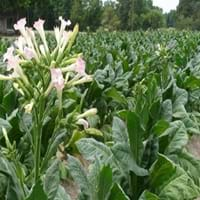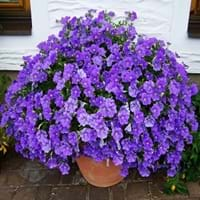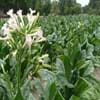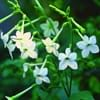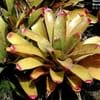Life Span
Annual and Perennial
Annual
Type
Tender Perennial
Tender Perennial
Origin
Central America, South America
North America, Mexico, Central America, South America
Types
Not Available
Not Available
Habitat
Cultivated Beds
Depression on prairies, Moist Ditches
USDA Hardiness Zone
10-11
9-11
AHS Heat Zone
Not Available
12-1
Sunset Zone
H1, H2, 8, 9, 18, 19, 20, 21, 22, 23, 24
8, 9, 14, 15, 16, 17, 18, 19, 20, 21, 22, 23, 24
Habit
Upright/Erect
Not Available
Flower Color
Light Pink
White, Yellow, Red, Blue, Purple, Orange, Pink
Flower Color Modifier
Bicolor
Bicolor
Fruit Color
Brown, Sandy Brown
Not Available
Leaf Color in Spring
Green
Green, Gray Green
Leaf Color in Summer
Green, Dark Green
Green, Gray Green
Leaf Color in Fall
Green, Dark Green
Green, Gray Green
Leaf Color in Winter
Light Green
Light Green
Leaf Shape
Oblong elliptic
Oblong
Plant Season
Spring, Summer, Fall
Spring, Summer, Fall, Winter
Sunlight
Full Sun, Partial Sun
Full Sun, Partial Sun
Type of Soil
Loam, Sand
Loam, Sand
The pH of Soil
Acidic, Neutral
Acidic, Neutral
Soil Drainage
Well drained
Well drained
Bloom Time
Early Summer, Summer
Indeterminate
Repeat Bloomer
No
Not Available
Tolerances
Drought
Drought
Where to Plant?
Ground
Container, Ground, Pot
How to Plant?
Seedlings
Seedlings, Stem Planting, Transplanting
Plant Maintenance
Medium
Medium
Watering Requirements
Average Water Needs, Do Not over Water
Keep the ground moist but not water-logged, Requires regular watering, Requires watering in the growing season
In Summer
Lots of watering
Lots of watering
In Spring
Moderate
Moderate
In Winter
Average Water
Average Water
Soil pH
Acidic, Neutral
Acidic, Neutral
Soil Type
Loam, Sand
Loam, Sand
Soil Drainage Capacity
Well drained
Well drained
Sun Exposure
Full Sun, Partial Sun
Full Sun, Partial Sun
Pruning
Remove damaged leaves, Remove dead branches, Remove dead leaves
Prune to stimulate growth
Fertilizers
Equal amount of N,P,K
All-Purpose Liquid Fertilizer
Pests and Diseases
Aphids, Black Shank, Brown Spots, Collar Rot
Red blotch
Plant Tolerance
Drought
Drought
Flower Petal Number
Single
Single, Double, Semi-Double
Fragrant Bark/Stem
Yes
No
Foliage Texture
Coarse
Medium
Foliage Sheen
Matte
Matte
Attracts
Wildlife
White bugs
Allergy
Dermatitis
Not Available
Aesthetic Uses
Showy Purposes
Beautification, Bouquets, Landscape Designing, Showy Purposes, Used for decorating walls, fences, gates, hedges, etc.
Beauty Benefits
Not Available
Not Available
Environmental Uses
Air purification
Air purification
Medicinal Uses
Antispasmodic, Diuretic, Emetic, Expectorant, Homeopathy, Sedative
Not Available
Part of Plant Used
Leaves, Seeds
Flowers
Other Uses
Used as an insecticide, Used as insect repellent, Used to make cigarettes and cigars
Decoration Purposes, Showy Purposes, Used as Ornamental plant
Used As Indoor Plant
No
Yes
Used As Outdoor Plant
Yes
Yes
Garden Design
Mixed Border
Bedding Plant, Container, Hanging Basket, Houseplant, Mixed Border, Rock Garden / Wall, Tropical
Botanical Name
NICOTIANA tabacum
CALIBRACHOA
Common Name
Smoking Tobacco
Calibrachoa, Million Bells
In Hindi
Smoking Tobacco
Calibrachoa
In German
Rauchtabak
Calibrachoa
In French
Tabac fumeurs
Calibrachoa
In Spanish
fumar tabaco
Calibrachoa
In Greek
Καπνός για κάπνισμα
Calibrachoa
In Portuguese
O fumo de tabaco
Calibrachoa
In Polish
Palenie tytoniu
Calibrachoa
In Latin
Quisque Tobacco
Calibrachoa
Phylum
Magnoliophyta
Tracheophyta
Class
Magnoliopsida
Magnoliopsida
Order
Solanales
Solanales
Family
Solanaceae
Solanaceae
Genus
Nicotiana
Calibrachoa
Clade
Asterids, Eudicots
Angiosperms, Eudicots
Tribe
Nicotianeae
Not Available
Subfamily
Nicotianoideae
Petunioideae
Number of Species
Not Available
Difference Between Smoking Tobacco and Calibrachoa
If you are confused whether Smoking Tobacco or Calibrachoa are same, here are some features about those plants to help you choose better. Many people think that these two plants have the same characteristics, but one can see Smoking Tobacco and Calibrachoa Information and learn more about it. Fertilizers required for proper growth of Smoking Tobacco are Equal amount of N,P,K, whereas for Calibrachoa fertilizers required are All-Purpose Liquid Fertilizer. Hence, one should know the basic difference between Smoking Tobacco and Calibrachoa if you are planning to have them in your garden to enhance its beauty.
<
Flowering PlantsImportance of Smoking Tobacco and Calibrachoa
Want to have the most appropriate plant for your garden? You might want to know the importance of Smoking Tobacco and Calibrachoa. Basically, these two plants vary in many aspects. Compare Smoking Tobacco and Calibrachoa as they differ in many characteristics such as their life, care, benefits, facts, etc. Every gardener must at least have the slightest clue about the plants he wants to plant in his garden. Compare their benefits, which differ in many ways like facts and uses. The medicinal use of Smoking Tobacco is Antispasmodic, Diuretic, Emetic, Expectorant, Homeopathy and Sedative whereas of Calibrachoa is Not Available. Smoking Tobacco has beauty benefits as follows: Not Available while Calibrachoa has beauty benefits as follows: Not Available.
Compare Facts of Smoking Tobacco vs Calibrachoa
How to choose the best garden plant for your garden depending upon its facts? Here garden plant comparison will help you to solve this query. Compare the facts of Smoking Tobacco vs Calibrachoa and know which one to choose. As garden plants have benefits and other uses, allergy is also a major drawback of plants for some people. Allergic reactions of Smoking Tobacco are Dermatitis whereas of Calibrachoa have Not Available respectively. Having a fruit bearing plant in your garden can be a plus point of your garden. Smoking Tobacco has no showy fruits and Calibrachoa has no showy fruits. Also Smoking Tobacco is not flowering and Calibrachoa is not flowering . You can compare Smoking Tobacco and Calibrachoa facts and facts of other plants too.
